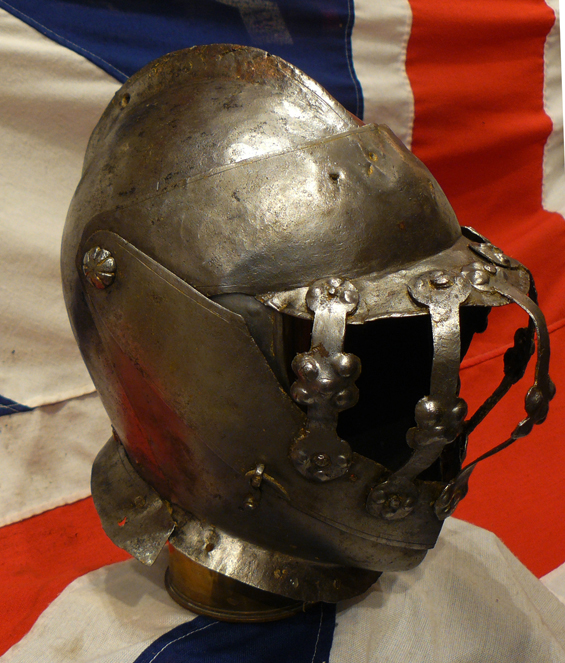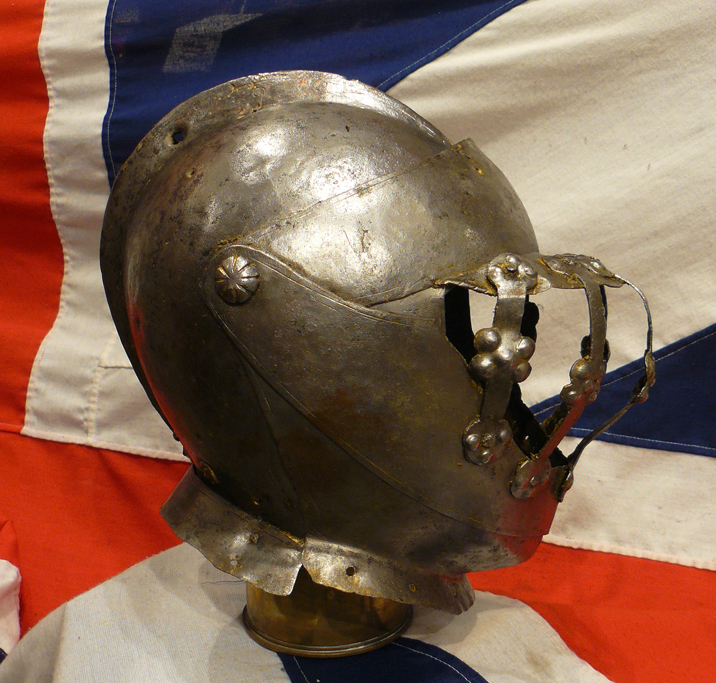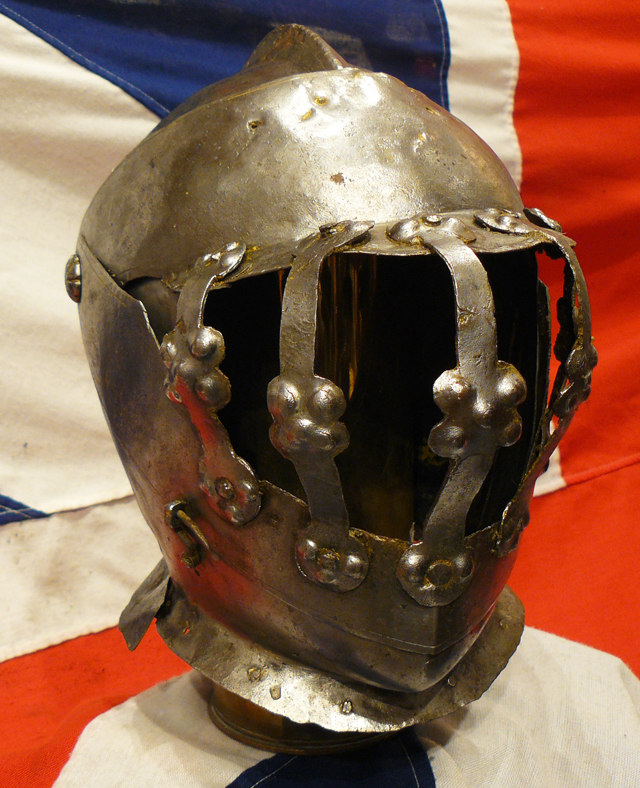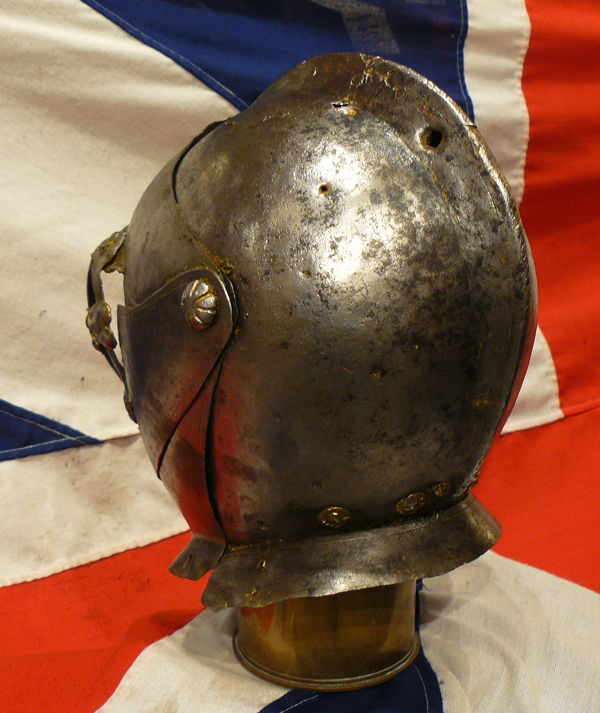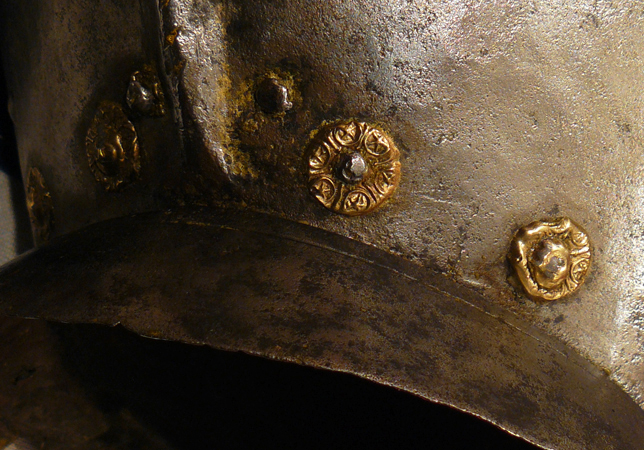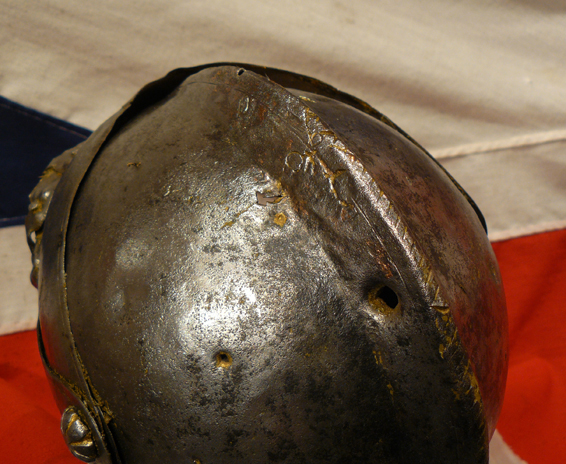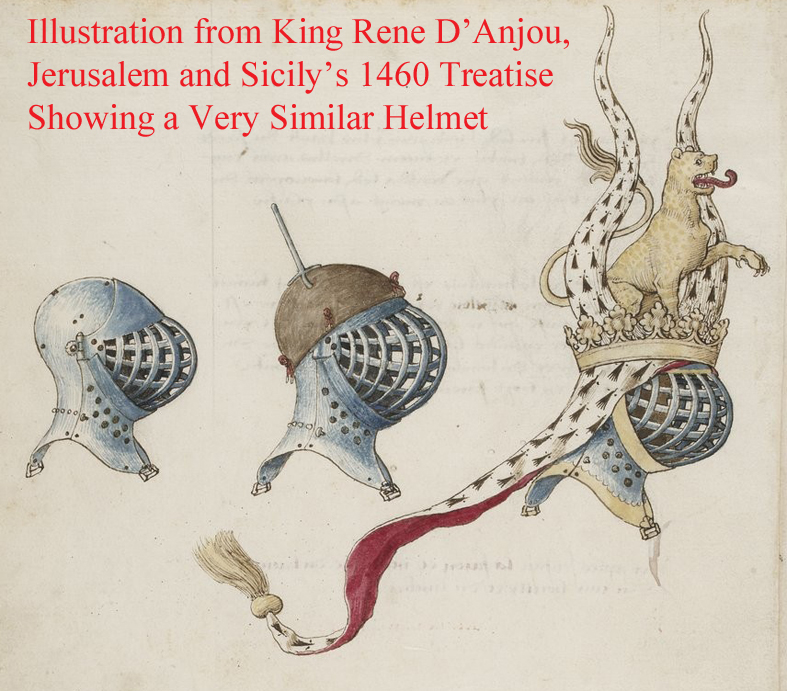A Beautiful, Original, 16th Cent. Italian Knight’s ‘Close’ Helmet From William Randolph Hearst’s Castle, San Simeon Formerly the Most Famous Private Museum Collection in the World. He Was Portrayed in Orson Welles Film Masterpiece ‘Citizen Caine’.
Although Orson Welles, possibly the greatest genius filmmaker Hollywood ever produced, hid the depiction of W.R. Hearst as the near despotic millionaire fictional character Charles Foster Caine, in his masterpiece, not a single person ever believed it not to be a depiction of Hearst, {least of all Hearst himself} thus, it resulted in Orson to be, possibly the first, movie star and director to be effectively ‘cancelled’, and his career henceforth was thus ruined and destroyed by Hearst’s media empire. Many believed, and some still do, this was the greatest tragedy to befall Hollywood film making in its 20th century history. Like the death of Mozart in his youthful prime, when mentioned, Orson Welles, is often followed by one of the saddest of remarks “what might have been?”.
A similar form of helmet is illustrated in the *treatise of René of Anjou, Duke of Anjou, Count of Provence, King of Jerusalem and Sicily. See picture of the similar helmet from the treatise in the gallery.
A fine original close helmet, probably Italian, with funerary face visor. Fine original brass rose head rivets. The front visor was adapted when the knight perished and this helm would have been mounted above his tomb with his achievements, in circa 1590, likely with his sword. Such as two other helmets *King Henry Vth (d. 1422), buried in Westminster Abbey. Set up over the dead king’s monument until the 20th century was his funerary helmet, a finely decorated jousting helm, now kept in the abbey museum.
Edward the Black Prince or Edward of Woodstock (15 June 1330 - 8 June 1376), eldest son of Edward III, King of England. Dating from 1376 his funerary visored helmet is to be found above his funerary monument in Canterbury Cathedral.
This helmet we offer is a stunning piece with amazing provenance, was owned by one of the greatest yet notorious men in world publishing history. William Randolph Hearst ( April 29, 1863 - August 14, 1951) was an American newspaper Mogul, a publisher who built the nation’s largest newspaper chain and whose methods profoundly influenced American journalism. His collecting took his agents around the Europe to acquire the finest treasures available, for his project of building the largest and finest private estate in the world, Hearst Castle in San Simeon. In much of this he succeeded. Hearst entered the publishing business in 1887 after taking control of The San Francisco Examiner from his father. Moving to New York City, he acquired The New York Journal and engaged in a bitter circulation war with Joseph Pulitzer's New York World that led to the creation of yellow journalism sensationalized stories of dubious veracity. Acquiring more newspapers, Hearst created a chain that numbered nearly 30 papers in major American cities at its peak. He later expanded to magazines, creating the largest newspaper and magazine business in the world.
He was twice elected as a Democrat to the U.S. House of Representatives, and ran unsuccessfully for Mayor of New York City in 1905 and 1909, for Governor of New York in 1906, and for Lieutenant Governor of New York in 1910. Nonetheless, through his newspapers and magazines, he exercised enormous political influence, and was famously blamed for pushing public opinion with his yellow journalism type of reporting leading the United States into a war with Spain in 1898.
His life story was the main inspiration for the development of the lead character in Orson Welles's film Citizen Kane. His mansion, Hearst Castle, on a hill overlooking the Pacific Ocean near San Simeon, California, halfway between Los Angeles and San Francisco, was donated by the Hearst Corporation to the state of California in 1957, and is now a State Historical Monument and a National Historic Landmark, open for public tours. Hearst formally named the estate La Cuesta Encantada (The Enchanted Slope), but he usually just called it the ranch. This helmet was acquired by Hearst for his mansion, Hearst Castle, but when his empire began to crumble much of his collection was sold at Gimbels In New York in 1941, which is where the Higgins Armory acquired this helmet. Orson Welles film, Citizen Kane, is thought by many to be one of the greatest masterpieces of film ever made, and it's portrayal of Charles Foster Kane was so mirroring WR Hearst that there was no doubt in any mind what it was meant to represent. So much so, Hearst dedicated some considerable time and effort during the next 10 years in order to destroy Orson Welles' career, and prevent him fulfilling his obvious potential as one of the greatest directors of all time. In much of this, once more, Hearst succeeded. Items from Hearst's collection rarely surface, as owners tend to keep hold of them for obvious reasons of historical posterity and provenance, and to be able to offer such a piece from that collection is a great privilege, and a rare opportunity for it's next fortunate owner.
*Ref; The saddle, helmet, sword and shield of King Henry V, which once formed part of his funeral 'achievements', are displayed in Westminster Abbey Museum, located in the abbey's eleventh century vaulted undercroft of St Peter. They were carried at his funeral in 1422 and later suspended on the wooden beam above the Henry V chantry for centuries, but in 1972 they were restored and placed in the abbey museum.
We show in the gallery an illustration from ‘Traictie de la Forme et Devis D'ung Tournoy’, that was written circa 1460 by King Rene of Anjou, King of Jerusalem and Sicily. The tournament book shows how a helmet, such as this one, would have been dressed for the tournament and it describes a style of tournament which Rene says he has adapted from the ancient customs of France and other countries.
Code: 22346
8995.00 GBP

